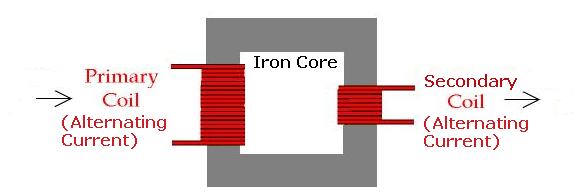Electrical Component Calculations
This section of the site is dedicated to sharing information, formulas and other documentation to aide in the computation of electrical circuit component values. The equations below are commonly known and used universally. I have done my best to be accurate but I cannot guarantee that all of the following information is correct or appropriate for your purposes.
I welcome any comments or corrections. Thanks to all who have notified me of inaccuracies. This type of participation makes this site more valuable. Please click here for a link to email your comment, correction, suggestion or question.
Series Circuits
Parallel Circuits
Transformers
Basics
Ohm's Law is the basis for all power calculations as it defines values in terms of other values. That is if you know enough of the variables in a situation you will be able to compute a needed value. To get started, Click here to see my Ohm's Law Pie Chart that shows the relationships between power (P), voltage (E), current (I) and resistance (R).
Series Circuits
A series circuit is a circuit that has only 1 path that electrons can flow through.
Rule 1: The total current in a series circuit is equal to the current in any other part of the circuit.
TOTAL CURRENT (It) = I1 = I2 = I3... = In
Rule 2: The total voltage in a series circuit is equal to the sum of the voltages across all parts of the circuit.
TOTAL VOLTAGE (Et) = E1 + E2 + E3... + En
Rule 3: The total resistance of a series circuit is equal to the sum of the resistances of all the parts of the circuit.
TOTAL RESISTANCE (Rt) = R1 + R2 + R3... + Rn
Parallel Circuits
A parallel circuit is a circuit that has more than 1 path that electrons can flow through.
Rule 1: The total current in a parallel circuit is equal to the sum of the currents in all of the branches of the circuit.
TOTAL CURRENT (It) =I1 + I2 + I3... + In
Rule 2: The total voltage across any branch in parallel is equal to the voltage across any other branch and is additionally equal to the total circuit voltage.
TOTAL VOLTAGE (Et) = E1 = E2 = E3... = En
Rule 3: The total resistance of a parallel circuit is found by applying Ohm's Law to the total values of the circuit.
TOTAL RESISTANCE (Rt) = (Et) / (It)
Transformers
Transformer Equation.
The transformer equation relates the number of turns of wire to the difference in voltage between the primary and secondary coils.
Vp/Vs = Np/Ns
Where Vp is the voltage in the
primary coil.
Vs is the voltage in the secondary coil.
Np is the number of turns of wire on the primary coil.
Ns is the number of turns of wire on the secondary coil.
There are two points to remember.
1. Transformers only work with alternating
current. Using direct current will create a magnetic field in the
core but it will not be a changing magnetic field and so no voltage
will be induced in the secondary coil.
2. Using a step up transformer to increase the voltage does not give
you something for nothing.
As the voltage goes up, the current goes down by the same proportion.
The power equation shows that the overall power remains the same,
P = I x E OR Power = Current x Voltage. (easy as PIE)
In reality, the power output is always less than the power input
because the changing magnetic field in the core creates currents
(called eddy currents) which heat the core. This heat is then lost
to the environment, it is wasted energy.

Home
| Electronics & Electrical |
Motors & Mechanics
| Various Conversions |
Radio |
About |Guest Book
| Privacy Policy |
Terms of Use
![]()
Copyright
©2024 KC9AOP. All Rights Reserved.

